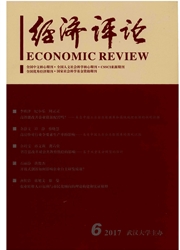

 中文摘要:
中文摘要:
通过在两部门OLG模型中将人口寿命纳入代理人效用,本文研究了养老保险机制与公共健康政策间的匹配问题。结果发现:长寿偏好、生存概率、资本与劳动密集型部门间的相对工资共同决定"最优"人口寿命,并与资本劳动替代弹性一道共同决定"均衡"人口寿命。在模型中引入养老保险机制后发现:养老保险机制与长寿偏好间存在双向调节行为,长寿偏好下养老保险机制存在一定的自我修复功能。通过内生化生存和寿命影响因子,发现生存路径、长寿路径和资本积累路径构成的三维空间上的均衡解由资本劳动替代弹性决定。政策分析表明:在强势养老保险政策与低效率公共健康政策组合下,考虑到工资水平,目前高缴费水平可能是中国养老保险与公共健康低水平政策组合为维持"代际"均衡最优健康资源分配的必然结果。
 英文摘要:
英文摘要:
In this paper, longevity is introduced into the utility function in a two sector overlapping generations model. It is shown that the longevity preference, the probability of surviving and the relative wages between capital intensive sector and labor intensive sector decide the agent' s optimal lifetime and they also decide the equilibrium lifetime along with the accumulation of capital. After introducing social security system, our result is that there is a two-way adjustment mechanic between retirement insurance system and longevity preference, and social security system have a function of self-repair under longevity preference. By endogenizing influence factors of surviving and longevity, we show that steady states depend significantly on the capital-labor ratio in the route of surviving, longevity and capital. Policy analysis shows that, in order to maintain optimal equilibrium redistribution of public health resource, high contribute rate is necessary under the present portfolio of strong retirement insurance oolicv and ineffective oublic health nolicv in China.
 同期刊论文项目
同期刊论文项目
 同项目期刊论文
同项目期刊论文
 期刊信息
期刊信息
